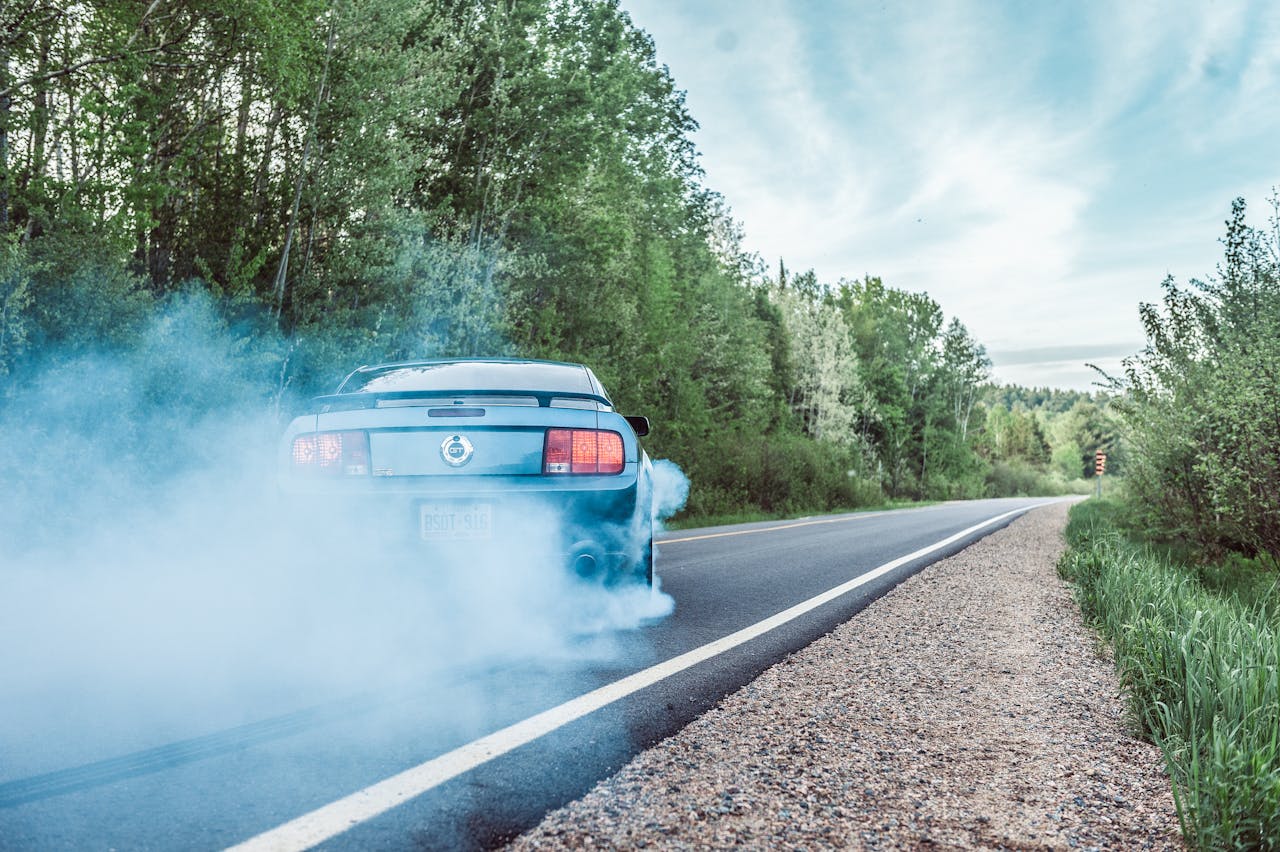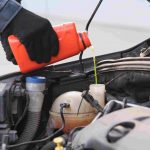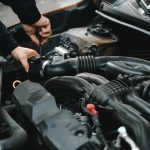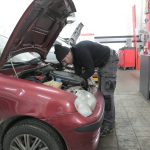Engine smoke can be a concerning sight for any driver, signaling potential issues under the hood. The color of the smoke holds vital clues about the nature of the problem, helping car owners identify and address issues promptly. In this comprehensive guide, we’ll explore the various colors of engine smoke – white, black, and blue – deciphering their meanings and offering practical solutions to keep your vehicle running smoothly.
Introduction:
Brief overview of car engine smoke
Car engine smoke is not a rare occurrence, but understanding its implications is crucial. The smoke emerges from the exhaust system, and its color can indicate specific problems within the engine.
Importance of identifying smoke colors
Different smoke colors suggest different issues, ranging from minor to severe. Timely identification and action can prevent further damage and ensure the longevity of your vehicle.
White Engine Smoke:
Causes of white smoke
- Coolant Leaks: White smoke often indicates coolant entering the combustion chamber, usually due to a leaking head gasket.
- Condensation: In colder weather, white smoke might be a result of normal condensation, especially during short trips.
Possible issues with the engine
- Head Gasket Failure: A damaged head gasket can lead to coolant mixing with the fuel, causing white smoke.
- Cracked Cylinder Head: If the cylinder head is cracked, coolant may leak into the combustion chamber.
How to address white smoke problems
- Check Coolant Levels: Ensure proper coolant levels and look for signs of leakage.
- Inspect the Head Gasket: A mechanic should inspect and replace a faulty head gasket if necessary.
Black Engine Smoke:
Common reasons for black smoke
- Fuel Injector Issues: Poorly functioning fuel injectors can lead to incomplete combustion and black smoke.
- Air Filter Blockage: Insufficient air intake can cause an imbalance in the air-fuel mixture, resulting in black smoke.
Engine issues associated with black smoke
- Fuel System Problems: Malfunctions in the fuel system, such as a clogged injector, can lead to black smoke.
- Airflow Issues: A dirty or clogged air filter can disrupt the proper air-fuel ratio.
Step-by-step solutions to address black smoke
- Fuel Injector Cleaning: Regularly clean or replace fuel injectors to ensure proper fuel atomization.
- Air Filter Replacement: Change the air filter at recommended intervals to maintain optimal airflow.
Blue Engine Smoke:
Understanding the origins of blue smoke
- Oil Burning: Blue smoke indicates burning oil, often caused by oil leaking into the combustion chamber.
- Worn Piston Rings or Valve Seals: Wear and tear on these components can lead to oil consumption and blue smoke.
Engine problems linked to blue smoke
- Piston Ring Issues: Worn-out piston rings can allow oil to enter the combustion chamber.
- Valve Seal Leaks: Faulty valve seals may result in oil leakage and blue smoke.
Practical steps to tackle blue smoke
- Monitor Oil Levels: Regularly check and maintain proper oil levels to prevent excessive burning.
- Engine Overhaul: In severe cases, an engine overhaul may be required to address worn-out components.
Importance of Prompt Action:
Emphasizing the need for immediate attention
- Preventing Further Damage: Timely action can prevent minor issues from escalating into major engine damage.
- Avoiding Costly Repairs: Addressing problems early on can save car owners from expensive repairs.
Preventive measures to avoid severe damage
- Regular Maintenance: Adhering to routine maintenance schedules can catch potential issues before they become serious.
- Professional Inspections: Periodic inspections by a qualified mechanic can identify hidden problems.
Diagnostic Tips for Car Owners:

Practical advice on self-diagnosing smoke colors
- Observation: Pay attention to the color, smell, and volume of the smoke to identify potential issues.
- Check Fluid Levels: Regularly check oil and coolant levels to spot abnormalities.
When to seek professional help
- Persistent Issues: If the smoke continues despite DIY efforts, consult a professional mechanic.
- Unusual Noises: Strange sounds accompanying the smoke may indicate more significant problems.
Regular Maintenance Practices:
The role of routine maintenance in preventing engine issues
- Oil Changes: Regular oil changes promote a healthy engine and prevent oil-related smoke.
- Air Filter Replacement: Maintain a clean air filter for optimal engine performance.
Tips for keeping your engine in top condition
- Follow Manufacturer Recommendations: Adhere to the manufacturer’s guidelines for maintenance intervals and recommended practices.
- Monitor Warning Lights: Attend to warning lights promptly to address potential issues before they worsen.
Real-life Examples:
Case studies illustrating smoke color scenarios
- Case 1: White smoke resolved with a simple coolant system repair.
- Case 2: Black smoke traced back to a faulty fuel injector, rectified with cleaning.
Lessons learned from practical experiences
- Proactive Maintenance: Drivers who prioritize regular maintenance experience fewer smoke-related issues.
- Early Intervention: Addressing smoke problems at the onset prevents extensive damage.
Expert Insights:
Interviews with automotive experts
- Expert 1: Recommends regular inspections for early issue detection.
- Expert 2: Stresses the significance of using quality fuel for engine health.
Their recommendations on handling engine smoke
- Timely Repairs: Experts emphasize the importance of immediate action when smoke is detected.
- Preventive Measures: Recommending preventive measures like routine maintenance to avoid smoke issues.
Tips for Choosing the Right Mechanic:
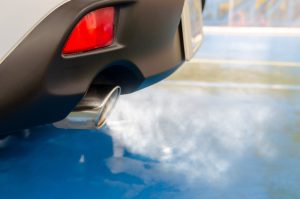
Qualities to look for in an automotive professional
- Experience: Seek experienced mechanics with a track record of successful repairs.
- Customer Reviews: Check online reviews to gauge the reputation of a mechanic.
Ensuring reliable service for your car
- Clear Communication: Maintain open communication with your mechanic to address concerns.
- Regular Check-ups: Schedule periodic check-ups even when there are no apparent issues.
DIY Solutions:
Simple fixes that car owners can do themselves
- Changing Air Filters: An easy DIY task to maintain proper airflow.
- Checking Fluid Levels: Regularly check and top up oil and coolant levels as needed.
Safety precautions for DIY repairs
- Follow Instructions: Adhere to the vehicle manual and online guides for DIY tasks.
- Know Your Limits: If unsure, seek professional assistance rather than risking further damage.
Common Misconceptions:
Addressing myths related to engine smoke
- Myth 1: All smoke is a cause for immediate concern.
- Myth 2: Blue smoke always signifies a major engine problem.
Clarifying misconceptions about certain colors
- Reality Check: White and black smoke can have benign causes, and not all instances require urgent attention.
- Context Matters: Understanding the context of smoke occurrences helps distinguish between normal and abnormal situations.
The Role of Quality Fuel:
Impact of fuel quality on engine performance
- Fuel Additives: Quality additives can enhance engine performance and reduce the risk of smoke issues.
- Fuel System Cleaning: Periodic fuel system cleaning maintains optimal fuel delivery.
Tips for selecting the right fuel for your car
- Follow Manufacturer Recommendations: Adhere to the recommended fuel type for your specific vehicle.
- Avoid Contaminated Fuel: Purchase fuel from reputable sources to prevent engine contamination.
Environmental Impact:
Discussing the environmental consequences of engine smoke
- Air Pollution: Engine smoke contributes to air pollution, emphasizing the need for clean emissions.
- Eco-friendly Driving: Encouraging drivers to adopt eco-friendly habits to minimize environmental impact.
Encouraging eco-friendly driving habits
- Reduce Idling: Minimize engine idling to decrease unnecessary emissions.
- Regular Emissions Checks: Schedule periodic emissions checks to ensure compliance with environmental standards.
Conclusion
Summarizing key points
- Early Detection is Key: Identifying and addressing engine smoke early prevents extensive damage.
- Routine Maintenance Matters: Regular upkeep reduces the likelihood of smoke-related issues.
Reiterating the importance of addressing engine smoke promptly
Prompt action is the driver’s responsibility in maintaining a healthy and long-lasting vehicle. Ignoring engine smoke can lead to severe consequences and unnecessary expenses.
Last Updated on March 10, 2024 by admin

Mac is an Automotive enthusiast. He owns up to 15 vehicles. He deals with Auto problems and shows his skill to Car owners who are seeking any type of Car help.

